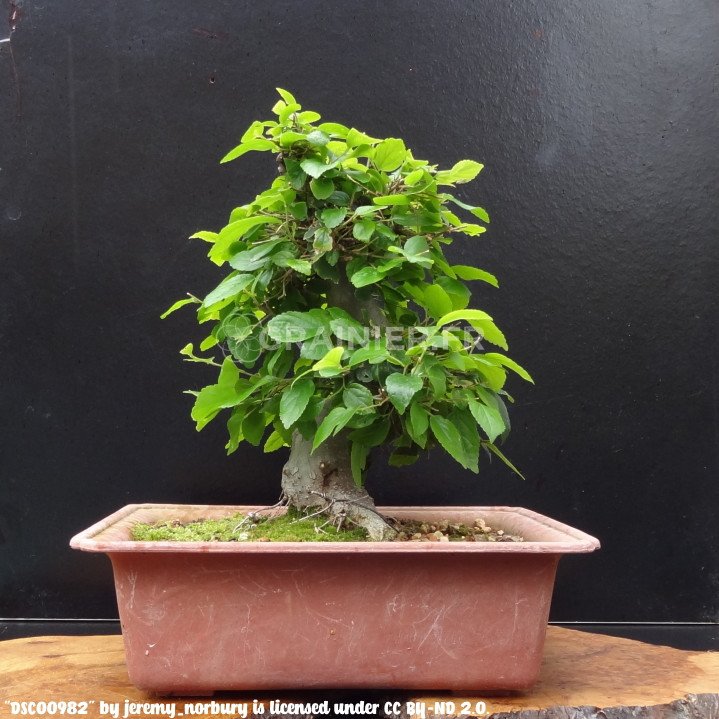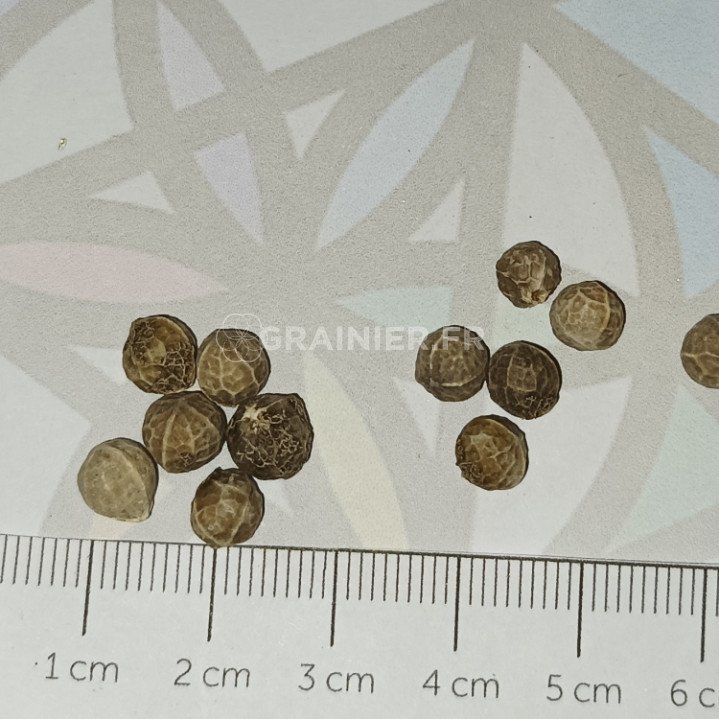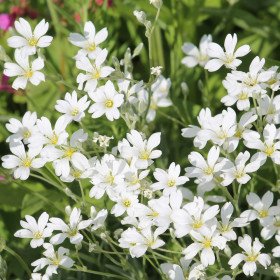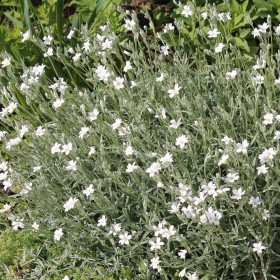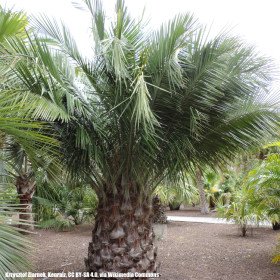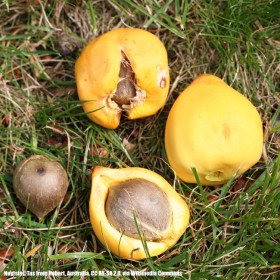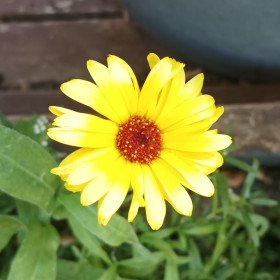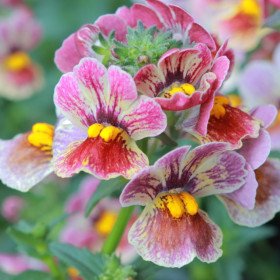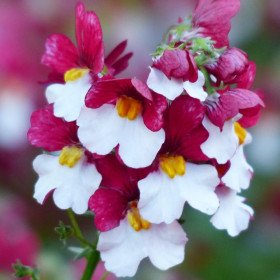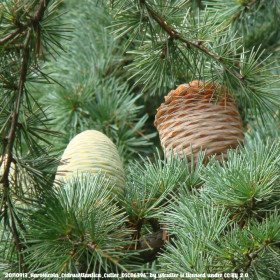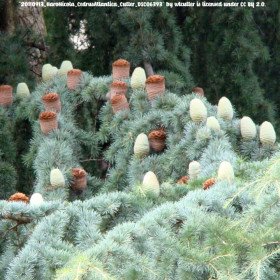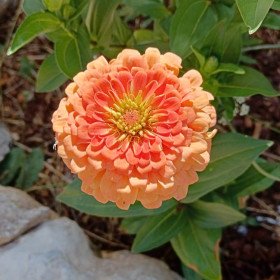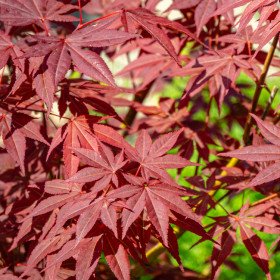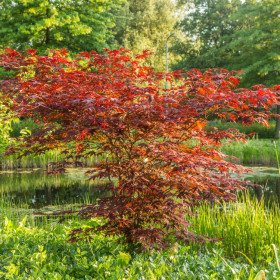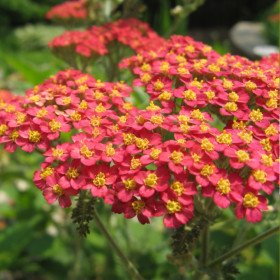10 Graines Micoucoulier de Provence, Celtis australis
10 Graines Micoucoulier de Provence, Celtis australis
- Modèle : 10 Graines Micoucoulier de Provence, Celtis australis
- Disponibilité : 19
- 1,50€
Micoucoulier de Provence, Celtis australis |
Celtis australis, également connu sous le nom de micocoulier de Provence, est un arbre à feuilles caduques appartenant à la famille des Ulmaceae.
10 graines
Description : Celtis australis est un arbre de taille moyenne à grande, pouvant atteindre 15 à 25 mètres de hauteur. Il présente une silhouette étalée et arrondie avec un tronc généralement tordu et des branches étalées. Les feuilles sont simples, alternes, ovales à lancéolées, avec une bordure légèrement dentelée. Elles sont de couleur verte pendant la saison estivale et virent au jaune à l'automne. Les fleurs sont petites et verdâtres, regroupées en grappes pendantes. Les fruits sont de petites drupes rondes de couleur brun-rougeâtre.
Utilisation : Celtis australis est souvent utilisé comme arbre d'ornement dans les parcs, les jardins et les avenues. Son port étalé et sa belle silhouette en font un arbre attrayant pour créer de l'ombre et ajouter de la hauteur au paysage. Les feuilles caduques offrent un feuillage changeant au fil des saisons, tandis que les petites drupes peuvent attirer la faune, notamment les oiseaux.
Symbolique : Le Celtis australis est souvent associé à la longévité, la résilience et la sagesse. Son apparence tordue et ses branches étalées évoquent la force et l'adaptabilité face aux défis de la vie. Dans certaines cultures, il est considéré comme un arbre sacré symbolisant la protection et la guérison.
Semis des graines : Voici un guide détaillé pour le semis des graines de Celtis australis :
Collecte des graines : Les graines de Celtis australis sont généralement récoltées à partir des fruits mûrs. Attendez que les drupes deviennent brun-rougeâtre et légèrement molles. Cueillez les fruits et retirez les graines de leur enveloppe extérieure.
Préparation des graines : Les graines de Celtis australis peuvent avoir une dormance naturelle. Pour briser cette dormance et améliorer le taux de germination, vous pouvez les stratifier à froid. Placez les graines dans un sac de plastique avec un substrat humide (comme de la vermiculite ou du sable humide) et stockez-les au réfrigérateur pendant environ 2 à 3 mois.
Préparation du sol : Préparez un sol bien drainé et fertile dans un contenant ou un lit de semis. Assurez-vous qu'il y a suffisamment d'espace pour que les racines se développent.
Semis : Semez les graines stratifiées sur la surface du sol, en les espaçant d'environ 2 à 3 centimètres. Recouvrez légèrement les graines d'une fine couche de terre ou de substrat de semis.
Arrosage : Arrosez le sol pour l'garder humide, mais pas détrempé. Veillez à ne pas trop arroser pour éviter la pourriture des graines.
Germination : Placez le récipient dans un endroit chaud et ensoleillé, idéalement à une température d'environ 20 à 25 degrés Celsius. Les graines de Celtis australis peuvent prendre de 2 à 4 semaines, voire plus, pour germer.
Soins des semis : Une fois que les semis ont émergé, veillez à les maintenir dans des conditions lumineuses et à les arroser régulièrement pour garder le sol légèrement humide. Lorsque les semis atteignent une taille suffisante, vous pouvez les repiquer dans des pots individuels ou les transplanter à l'extérieur dans un endroit approprié.
Transplantation en plein air : Lorsque les jeunes plants ont atteint une taille suffisante et que tout risque de gel est écarté, vous pouvez les transplanter dans un endroit en plein soleil avec un sol bien drainé. Espacez-les d'environ 5 à 6 mètres pour permettre une bonne croissance.
Entretien : Arrosez régulièrement les jeunes plants pour les aider à s'établir. Une fois établis, les arbres de Celtis australis sont généralement assez résistants à la sécheresse. Taillez-les au besoin pour maintenir leur forme et éliminer les branches mortes ou endommagées.
En suivant ces étapes de semis détaillées, vous pourrez cultiver avec succès les graines de Celtis australis et profiter de cet arbre attrayant dans votre jardin.
Etiquettes : micoucoulier, provence, celtis, australis, GRAINES DE FLEURS & ARBRES Micoucoulier de Provence, Celtis australis, Arbres & Bonsaï Micoucoulier de Provence, Celtis australis, Micoucoulier de Provence, Celtis australis GRAINES DE FLEURS & ARBRES, Micoucoulier de Provence, Celtis australis Arbres & Bonsaï

